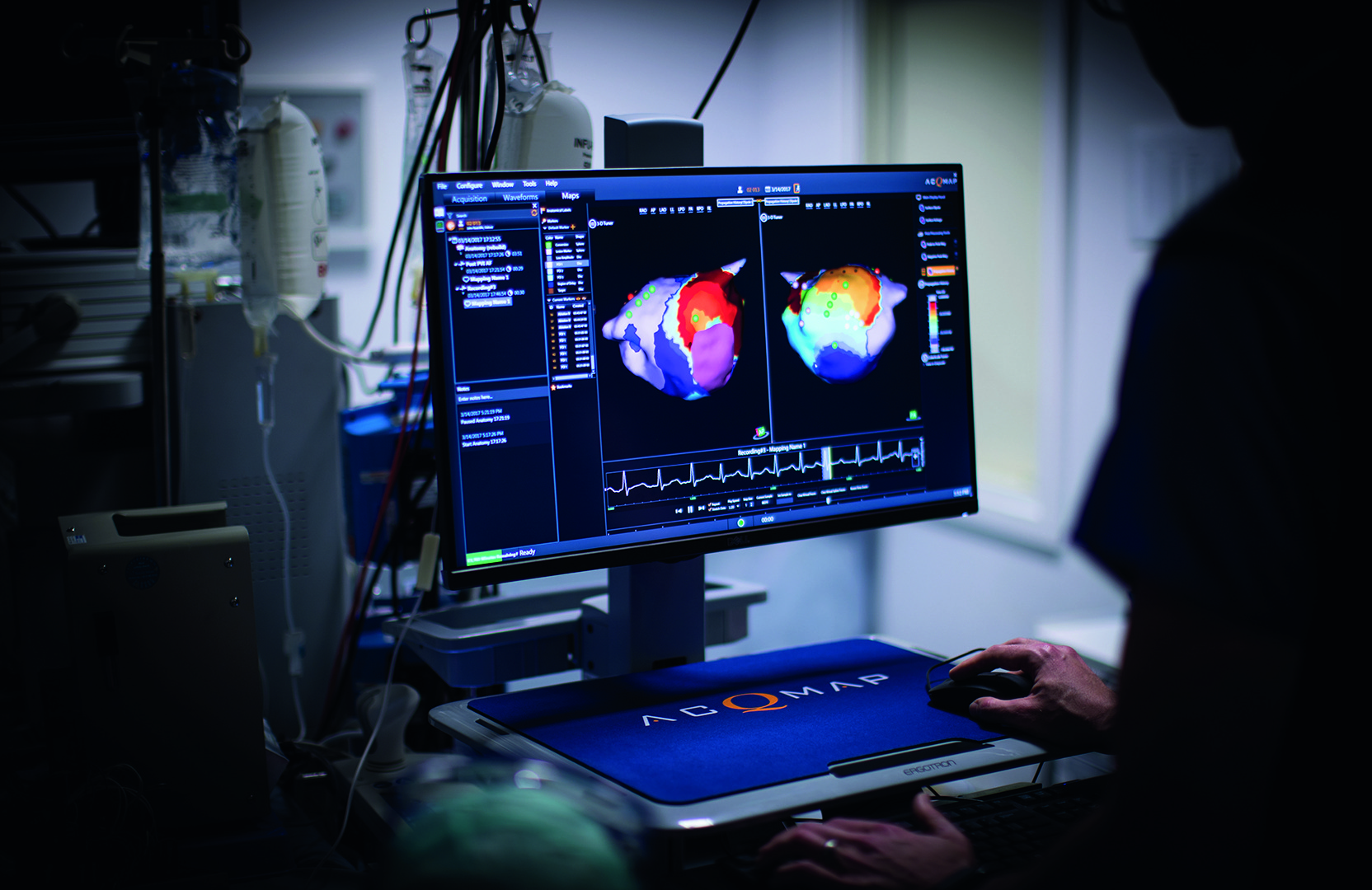 J Peter Weiss (Heart Institute, Banner University of Arizona Medical Center, Phoenix, USA) outlines his experience of the AcQMap (Acutus Medical) 3D imaging and mapping catheter system.
J Peter Weiss (Heart Institute, Banner University of Arizona Medical Center, Phoenix, USA) outlines his experience of the AcQMap (Acutus Medical) 3D imaging and mapping catheter system.
How does the AcQMap 3D Imaging and Mapping system differ from other EP systems?
The Acutus system is unique in two of its main characteristics. First is regarding the electroanatomic mapping capability. The AcQMap catheter can create real time, high definition, entire chamber electroanatomic maps. The 48 non-contact dipole electrodes and the associated software allow for calculation and display of activation derived from local dipole density. This has the potential to be higher resolution than the standard contact bipolar voltage-based mapping available in other systems. Moreover, the system captures activation through the entire chamber all at once. This is a significant advantage compared with other systems, especially when mapping irregular rhythms such as atrial fibrillation. In standard systems, anatomical areas are interrogated separately, and entire chamber activation is then stitched together, making simultaneous evaluation of the electrical activity of the entire chamber impossible. As complex arrythmias such as atrial fibrillation display as constantly changing activation, this system provides a unique opportunity to understand and potentially improve treatment of this difficult arrhythmia.
In addition, the system also allows for rapid and reproducible mapping of organised arrhythmias through its “SuperMap” capability, which adds additional resolution to the full chamber maps created from a single position. The rapid acquisition of high definition maps allows remapping during challenging cases, such as patients with multiple atypical atrial flutter circuits, in a time frame that would make use of traditional mapping systems challenging.
The second unique attribute is the ultrasound based anatomical mapping created by the 48 ultrasound crystals on the AcQMap catheter. This system creates a rapid, real time and undistorted representation of chamber anatomy. This contrasts with contact-based mapping which distorts chamber anatomy due to contact with the chamber wall. Promising aspects of the ultrasound imaging remain in development but have the potential to significantly impact practice. For instance, there is potential to image not only just the surface of the chamber, which allows creation of the “shell” currently used to guide mapping and ablation, but also to provide real time data on wall thickness. This would be an important step, as we have not had the ability to know in real time the thickness of the tissue that we are ablating and therefore how to best titrate energy. There may also be potential for real time evaluation of tissue density as an indicator of underlying substrate or of density of ablation lesions. When and if these capabilities are brought forward, they will further differentiate this technology.
What data are currently available to demonstrate the efficacy of the system?
Early development work has been promising, including foundational work validating the basic science behind the AcQMap system. Regarding clinic experience, the UNCOVER AF Study is the largest published study to date and clearly demonstrated the feasibility and effectiveness of this system in the treatment of patients with persistent AF. The systematic mapping and ablation of 129 patients with persistent AF showed 12-month results comparing favourably with standard practice and provides a solid foundation for further clinical evaluation and use. Further studies are under way and others are planned to begin in the near future to further evaluate the efficacy of this approach.
How steep is the learning curve for using the AcQMap 3D Imaging and Mapping system?
The learning curve is quite rapid. Just a handful of cases needed to create comfort with the sheaths and catheters and the mapping process. Excellent clinical support has made early adoption reasonable, considering the extremely challenging cases that are often treated with this system.
Can you provide any examples of cases where AcQMap 3D Imaging and Mapping system has been of particular benefit?
Some of our most challenging cases are chosen for treatment with AcQMap due to its unique capabilities, cases that would be difficult with any system. A particular interest of ours is the correlation of underlying substrate with arrhythmia, including the application of the lessons of ventricular mapping to the atrium. We have used the AcQMap system to diagnose and treat several patients with atypical flutters where we have been able to rapidly map multiple circuits and correlate those maps with zones of slow conduction mapped during sinus rhythm and differential pacing. This has resulted in excellent outcomes in several of our most difficult-to-treat patients. In addition, persistent AF in patients remains an enigma, with little evidence of improved outcome for strategies beyond PVAI. While still early in our experience, AcQMap has allowed us to repeatedly identify areas of unique activation during full chamber mapping of complex arrhythmias (e.g. AF) that could then be targeted for ablation. We are looking forward to evaluating this further in upcoming research studies.
Are there any limitations of using the system, and how could these be overcome?
As expected at this stage, there is continued evolution of several important components of the AcQMap system and the bigger Acutus program. These components include the recent addition of contact mapping, further refinement of mapping and treatment protocols, further development of ultrasound capabilities, and the addition of a full suite of access, mapping and ablation tools. Each will come with its own challenges. While early experience has been promising, rigorous evaluation will be required to determine the true ability of this technology to improve the lives of our patients for the longer term.
Disclosure: J Peter Weiss serves as a consultant for Acutus Medical and is part of their medical advisory team.












